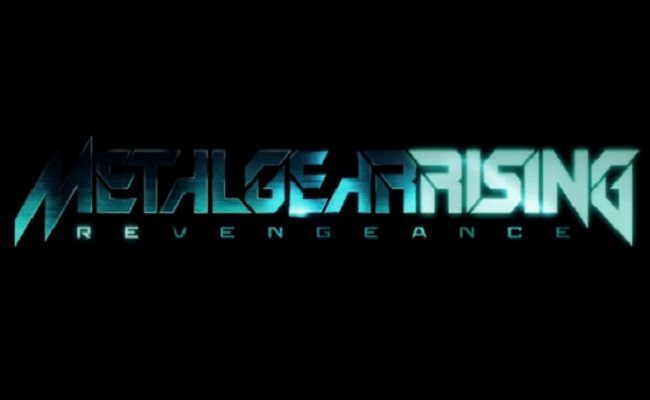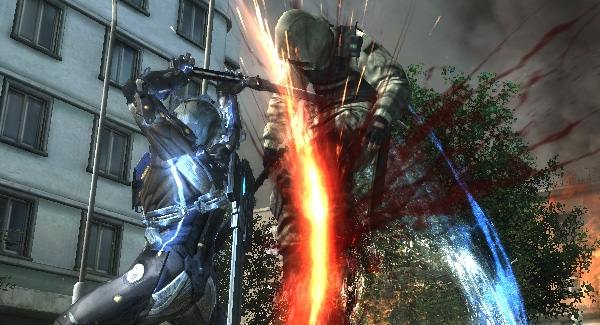The Metal Gear franchise has earned its hardcore following. Solid Snake and his exploits created the stealth genre, brought cinematic story-telling to the Playstation generation, confused the hell out of early PS2 adopters and are responsible for selling plenty of PlayStation 3 consoles in the current generation. Fans are right that the latest entry in the series, Metal Gear Rising: Revengeance isn’t a proper installment in the series. Snake isn’t the star, there is much more action than stealth, and swords are more common than guns. The gameplay mechanics of Revengeance may be more akin to Ninja Gaiden than Metal Gear, but this game definitely fits neatly into the Metal Gear universe.
A lot of video games try to make anti-war statements. From Medal of Honor to Mass Effect, gamers have heard that “War is hell.” Yet there is an inherent hypocrisy that comes from telling players that “Killing is wrong”, then handing them an arsenal of cool guns and offering bonus Experience Points for hunting down and killing every enemy on the level.
The Metal Gear series has always been especially effective in dealing with this paradox. The very nature of a stealth game encourages players to avoid combat whenever possible. Most of the games in the series let players choose between lethal and non-weapons when forced into combat. Even when the Player is required to kill a boss they often learn that the enemy isn’t entirely evil.
In Metal Gear Rising: Revengeance, the main character is Raiden, the androgynous hero of Metal Gear Solid 2. He wasn’t in MGS3, but by the time MGS4 arrived, Raiden had blossomed from figurative killing machine, into a literal killing machine when he became a powerful cyborg. Now, in Revengeance, he is more dangerous than ever with a new set of cybernetics, and a high-tech sword that can cut through anything. It’s a very bloody, yet surprisingly nuance tale of both revenge and vengeance.
“My sword is a tool of justice!” Raiden proclaims as he carves up people like slabs of ham!
The writers are very well aware of how unconvincing that sounds, and over the course of the game, Raiden begins to question his identity. The narrative is a clever deconstruction of video game story clichés, and it even goes so far as to question the morality of its own gameplay mechanics.
Raiden, being a cyborg, can only heal his injuries by extracting Repair Modules from enemies that he defeats, and he can only recharge his special abilities by dealing damage – How can he be a righteous defender of the innocent when he has turned life into a zero sum game where he can only live at the cost of others?
This sort of philosophizing is rampant in Revengeance, and fans of the story-telling in the Metal Gear franchise will enjoy the complex narrative with its various moral twists and turns.
The team of quirky cyborg level bosses are also perfectly in line with the franchise, as is the wildly convoluted plot line. The final boss spouts brilliant dialog which is simultaneously silly and eerily reminiscent of real-world rhetoric about America’s War On Terror. The writers are clearly aware of how closely they come to satire with this character, giving him some very obscure references to the film This Is Spinal Tap. Long-time Metal Gear fans expect an epic final boss (And a verbose one), and Revengeance doesn’t disappoint.
As for the stealth-based gameplay seen in the previous games… that’s a different story. The action gameplay of Revengeance rarely requires the Player to sneak around. Raiden can run up behind enemies and bring them down with a one-hit-kill, but most of the time players will be engaged in frantic swordfighting against groups of foes who are perfectly aware of the ninja in their midst.
Many levels can be navigated more easily by avoiding detection, and a few have so many enemies in one place that players pretty much have to use stealth to survive. The option of using ninja skills to whittle down the number of patrolling guards is always there, but skilled players can still just chop their way through virtually every encounter.
Eventually Raiden gets equipment like smoke bombs that can be used to add in more opportunities for stealth-based play. There are also nods to the previous games like the old cardboard box trick, and a high-tech version of the dirty magazines that could be used to distract guards.
When not sneaking, Raiden uses the sort of combo-based melee combat found in God of War, Devil May Cry and Ninja Gaiden. There are lots of flashy moves at Raiden’s disposal, including gory finishing moves, and a tricky parry maneuver which is essential to performing well. While it isn’t what Snake used to do in the old games, it is still well-crafted action gaming.
A distinguishing feature is “Blade Mode”. This is like Bullet Time but with a sword. Raiden can use this to slow down time and target vulnerable areas on enemies. When used run-of-the-mill goons Blade Mode will let him dispatch an enemy quickly while simultaneously recharging his health and Blade Mode meter.
Against more powerful foes, Blade Mode becomes a tactical necessity. Some enemies can be neatly sliced in half with a well-placed blow, but others have to be slowly worn down. To kill the tougher characters, Raiden must shatter armor and slice off limbs to weaken them before he goes for the kill. Simply button-mashing will not get the job done.
Once players master these techniques, they can make Raiden do some very impressive moves like sliding under foes, then switching to Blade Time and slashing them to pieces as he slides by.
Metal Gear Rising: Revengeance may not be what fans were expecting, but it is a challenging adventure with an intriguing narrative that gives Raiden a well-deserved chance to shine. It is available now for Xbox 360 and PlayStation 3.



0 Comments